Can you imagine that loofah sponge (loofa, luffa), which you have just bought in the local health-food store, is actually an annual plant you can grow in your garden?
This lush vegetable with buttery yellow blooms, abundant foliage, and cucumber-like fruit of 2 feet (61 cm) is basically eatable. However, if you let it mature and dry on its own vine, you will get a large, fibrous woven skeleton of fruits. That is a part of this plant we usually use as a sponge.
What Should You Know about Loofah Sponge
Luffa is a plant from the gourd family which grows on vines, and its fruits are 25 to 30 inches (63.5 – 76 cm) long. You can eat immature luffas as soon as they become 4 to 8 inches (10 – 20 cm) long. After that, they will turn brown. When fruits become light, you can harvest them and use them as a sponge.
There are two separated species of this plant:
Luffa aegyptiaca
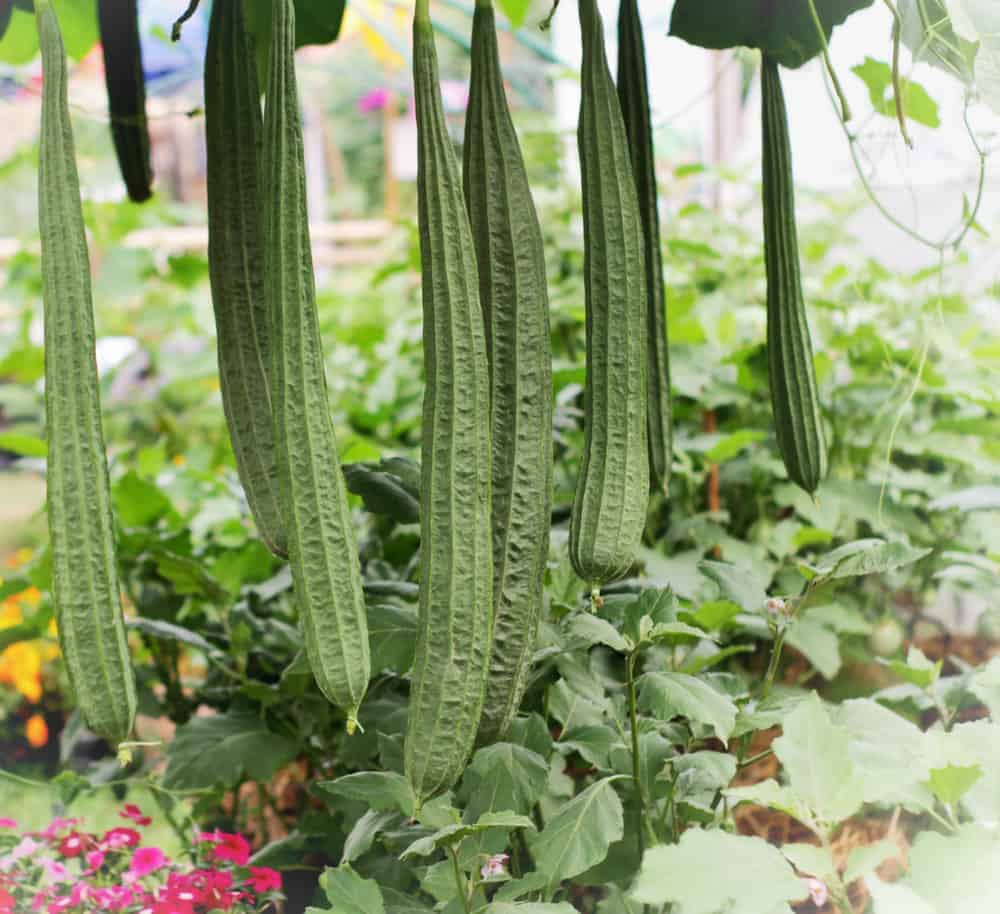
(Chinese okra, angled luffa, vegetable gourd, or ridged luffa) has long fruits with ridges throughout them
cyclindrica
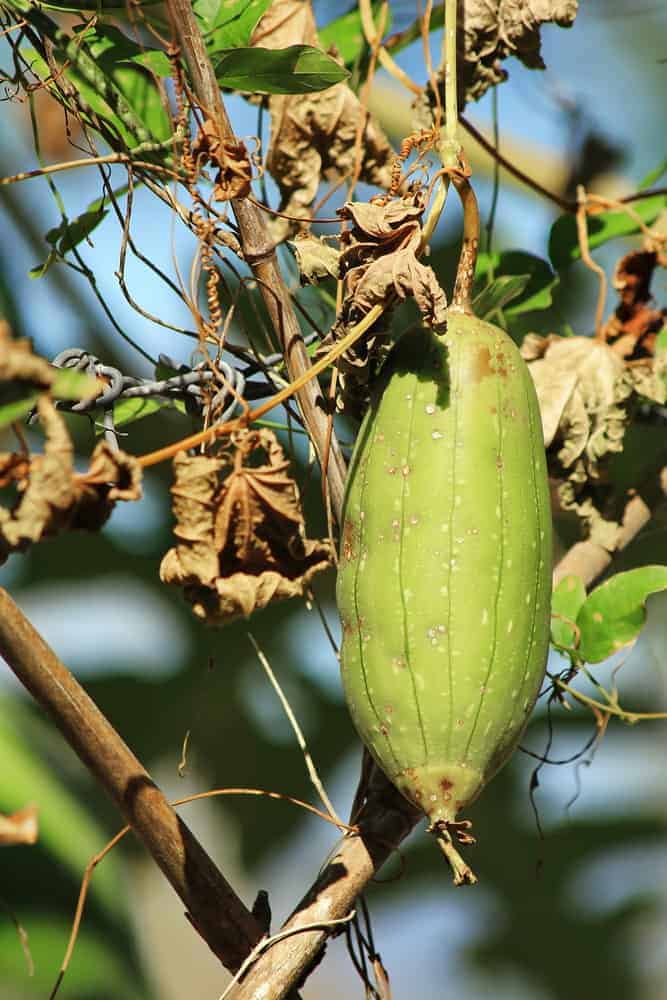
(Egyptian luffa, smooth luffa, gourd loofa, or dishrag gourd) has round fruits with creases throughout them
Benefits of Luffas
Health benefits
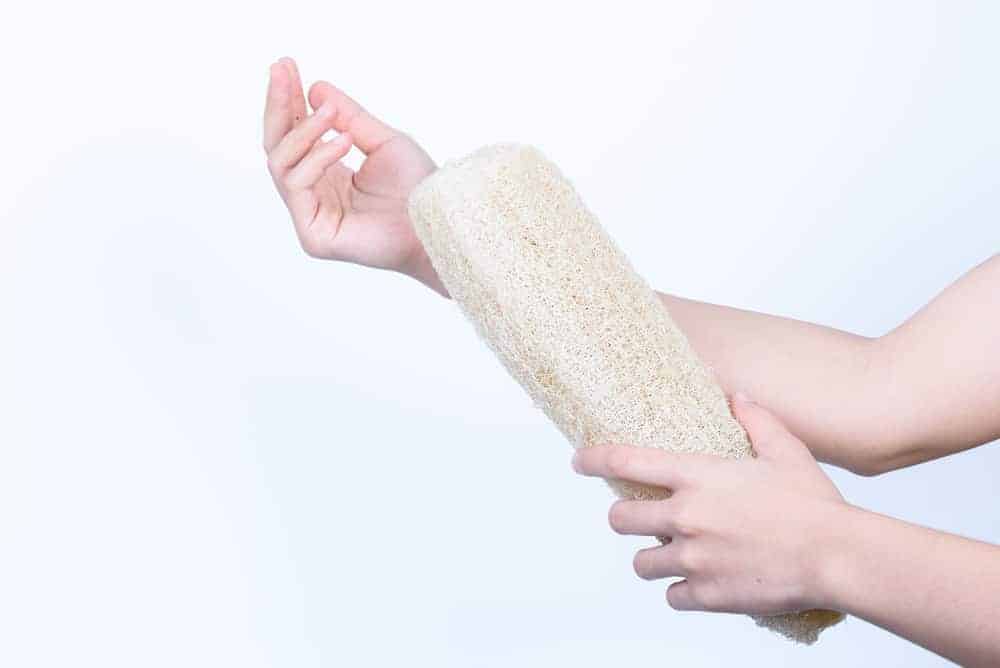
Use your luffa as a sponge for scrub – Use warm water to wet your luffa and make it soft. Add natural soap and gently scrub your skin by using small, circular motions.
Thanks to its rounded fibers, luffa will deeply exfoliate your skin and make it fresh and smooth without damaging it.
- Regular usage will clean oils and dirt particles from your pores
- By removing dead skin cells, luffa will make your skin look tender
- Since luffa will open your skin up, it will absorb other skin care products much easier
- It may help you reduce problems with acne
- You can use this plant as a practical material for wound care
Environmental perks
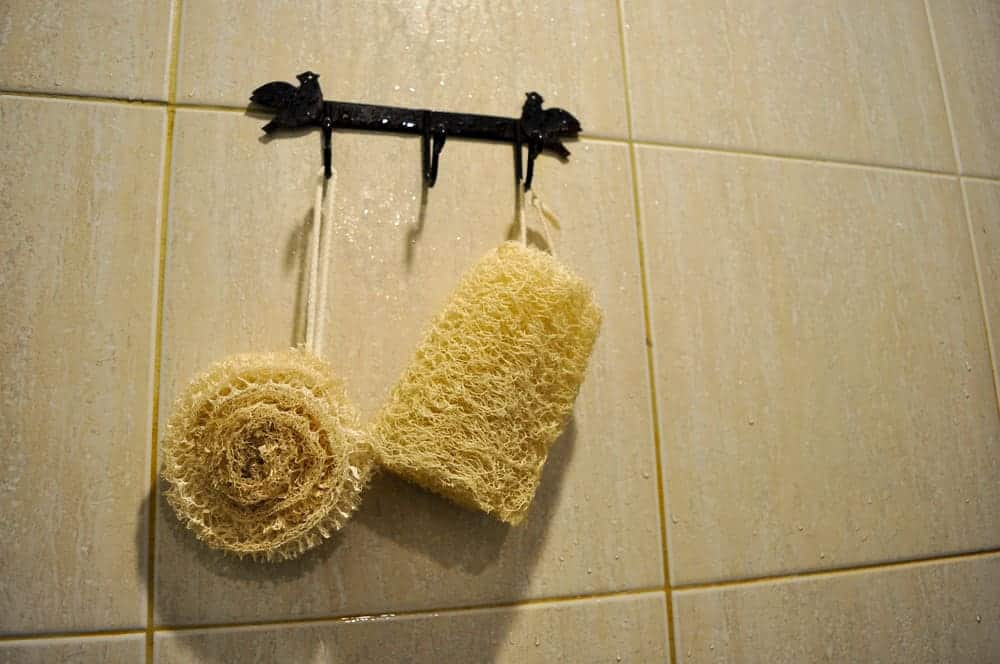
Use your luffa as a sponge for cleaning – Use them as a natural cleaning product to scrub pots or wash sanitary facilities in your bathroom, for example. There are a few advantages of this environmental-friendly product:
- It is a plant, and you can add used luffa into your compost pile after using it
- You can use this sponge instead of commercial cleaners full of plastic microbeads
In general, if you keep your luffa clean and dry it properly, you can use the same sponge for three to four weeks without any possible issues. The best thing you can do is to wash it adequately and hang it outside. Ultraviolet light will disinfect the sponge, and you will be able to use it for a long time.
How to Plant Loofah(Luffa) Sponge in Your Garden
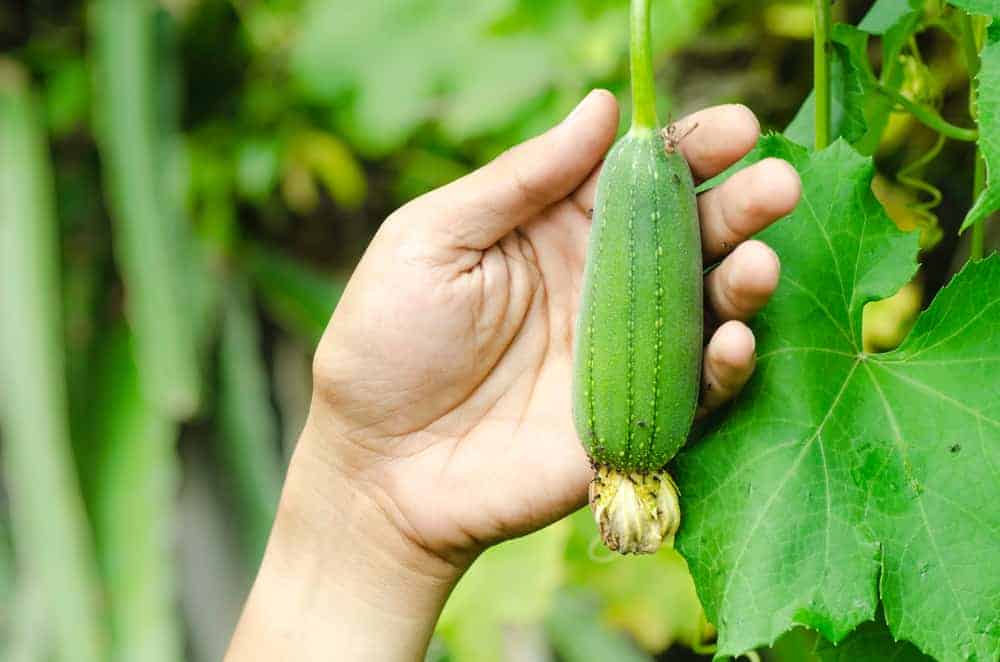
When you decide to grow loofah sponge, the first thing you should do is to purchase healthy, well-rated heirloom luffa seeds.
Start luffa seeds indoors in pots of 6 inches (15 cm) about 4 to 6 weeks before the last spring frost, and transplant the seedlings in the garden after the danger of frost passes. If you live in one of the warmer States, you can sow seeds in the ground directly in late spring when the temperatures of the soil are at least 70 F (21 C).
Soak luffa seeds in a glass of water the night before planting. In the morning, place three to four of them in a hole which is 0.75 inches (2 cm) deep, and add some organic compost. Don’t forget to water them thoroughly.
Your seeds will germinate within two weeks. You can transplant seedlings in the well-drained, moist ground when they are approximately 2 inches (5 cm) tall. Since it is pretty hard and tiring to grow luffas from seeds, you can save time and nerves by buying seedlings in the greenhouse.
Put seedlings in the ground gently and organize the distance between holes of 8 to 12 inches (20 – 30.5 cm). Keep in mind that rows should be at least 5 to 6.5 feet (1.5 – 2.0 m) apart.
Try to place them along a fence. Otherwise, you will need to make some trellis to support plants since luffas’ vigorous vines are up to 30 feet (9 m) long, grow upward, and need something to wrap around.
How to Care Loofah Sponge
Soil
To grow healthy and vigorous, your luffa gourds will require the well-drained, loam or sandy ground, with a pH of 5.5 – 6.8. It is always a good idea to do a soil test before planting your veggies.
Light
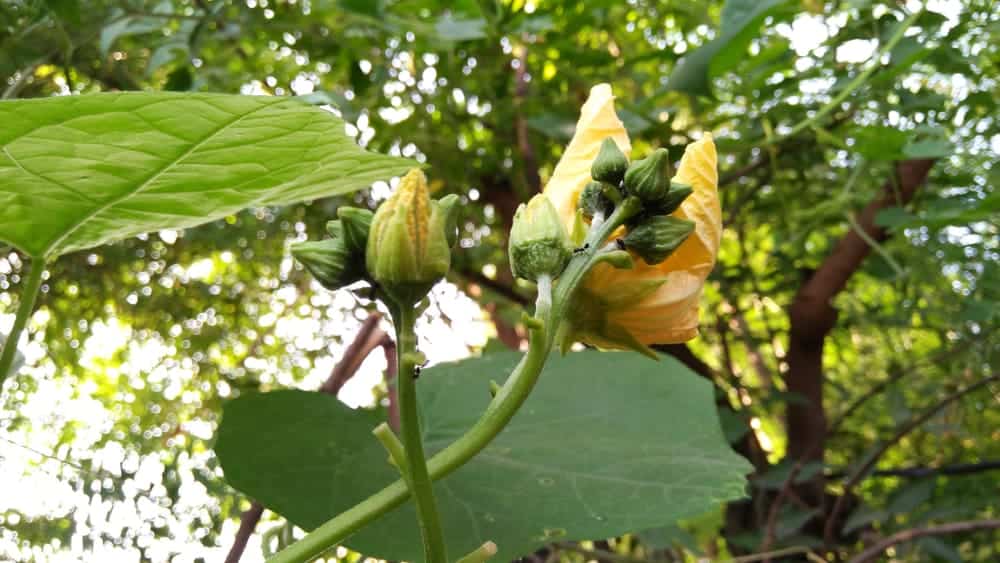
Your luffas need full sun to thrive. You should organize space the way to provide enough sun and excellent airflow for each plant.
Mulching
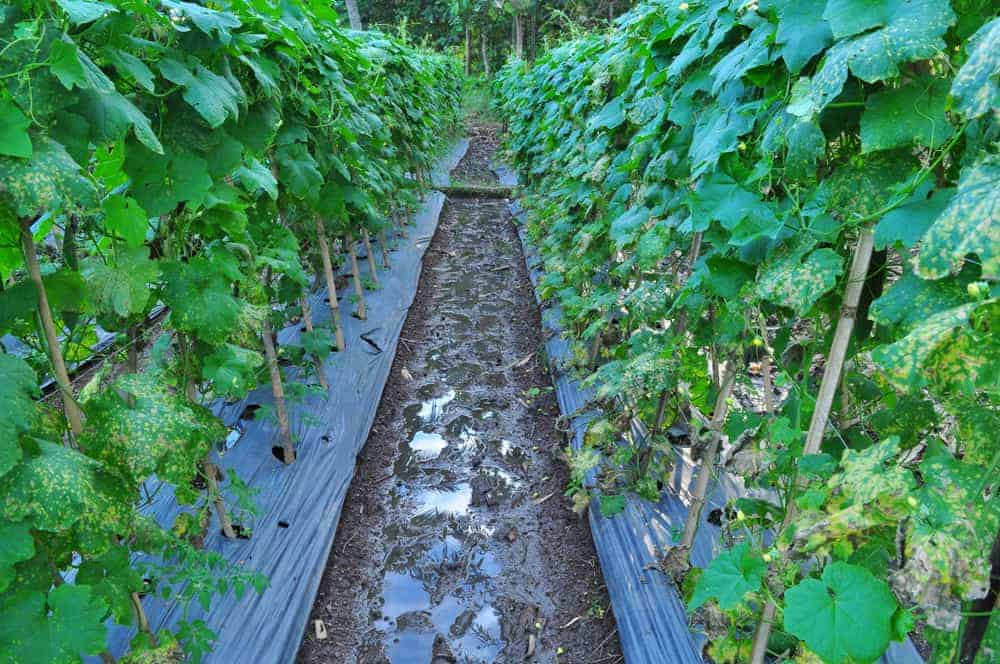
You should lightly mulch the trellised plants. Those of them which sprawl on the ground won’t need mulching since their leaves create living mulch.
Temperatures
Loofah sponge grows better in warm climates. The optimum temperatures of the ground for planting are from 77 to 95 F (25 -35 C).
Watering
Loofah sponges need moisture to sprout, and their seedlings need time and adequate watering for proper roots’ development. Never let the ground get too dry. If the pot is small, you need to water the soil every day, but you should take care not to over water.
Keep watering your plants once you transplant them in the garden. On average, they will need 1 inch (2.5 cm) of water a week. Consider installing the drip-irrigation system for your luffas.
Fertilizer
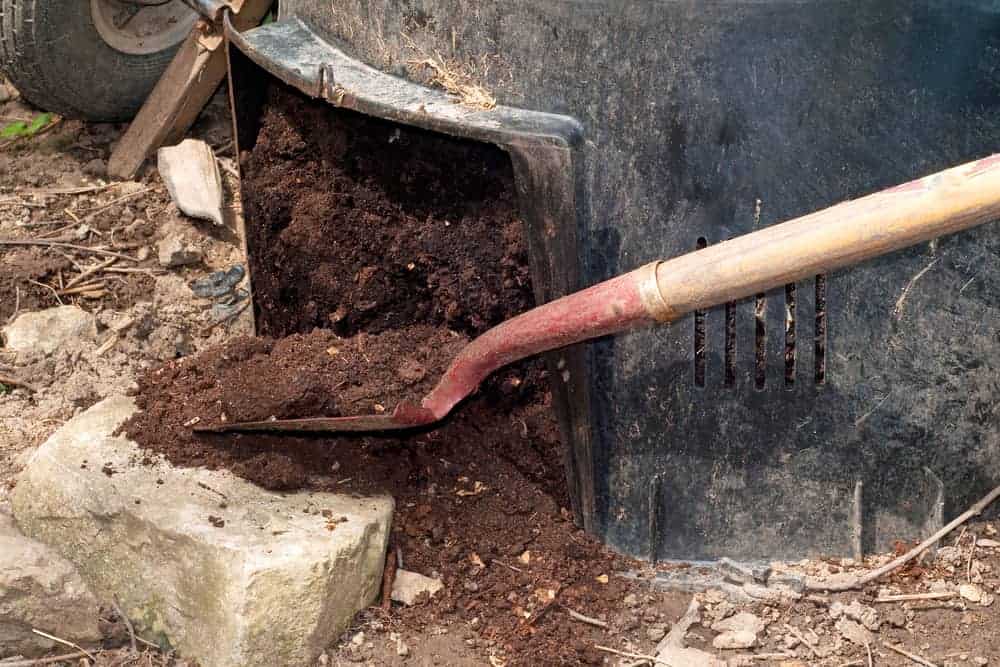
Your plants will need at least two or three serious fertilizing during the growing season. You will need to add approximately 20 to 25 pounds (9 – 11 kg) of nitrogen per acre (0.4 ha) and an adequate amount of potash and phosphate.
Nitrogen is essential at the seedling stage but, before your luffas start blooming, they will need phosphorus for root growth. Before settings of the fruit, your plants will need a higher potassium formulation. The best choice is fertilizer with an NPK ratio of 1-2-2 (for example, 5-10-10).
To provide a constant supply of nutrients for this vegetable, you may even consider applying aged manure, finished compost, or commercial fertilizer once a month.
Pinching
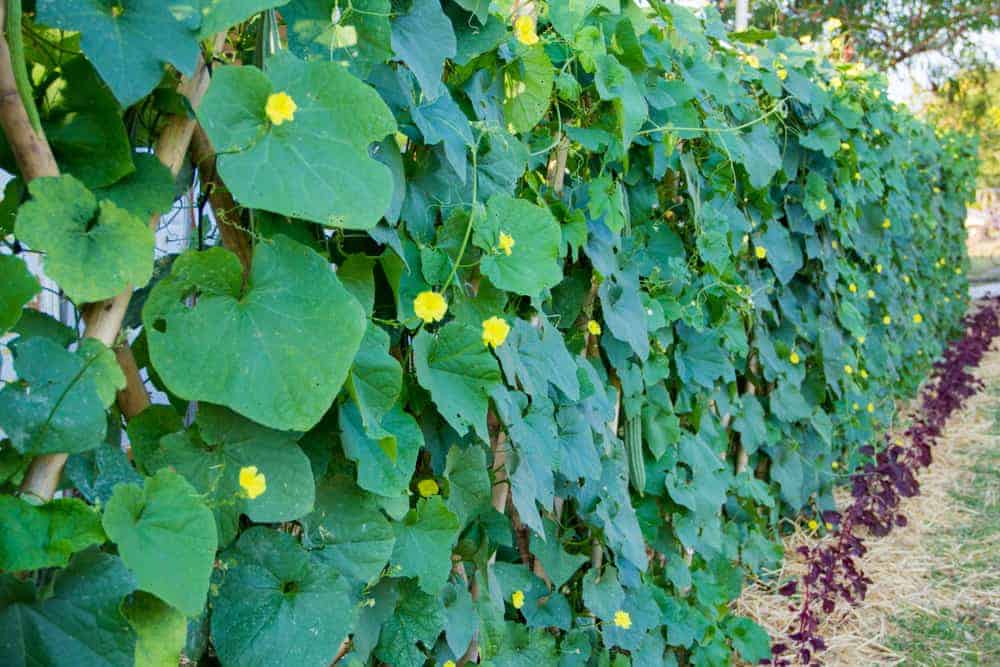
Try to pluck off the first, male flowers as soon as they appear. Once the vines of your luffas are 5 feet (1.5 m) high, you should pinch out the growing tips and cut the first four lateral branches from the main stem. All of that will encourage better development of fruits.
Weeding
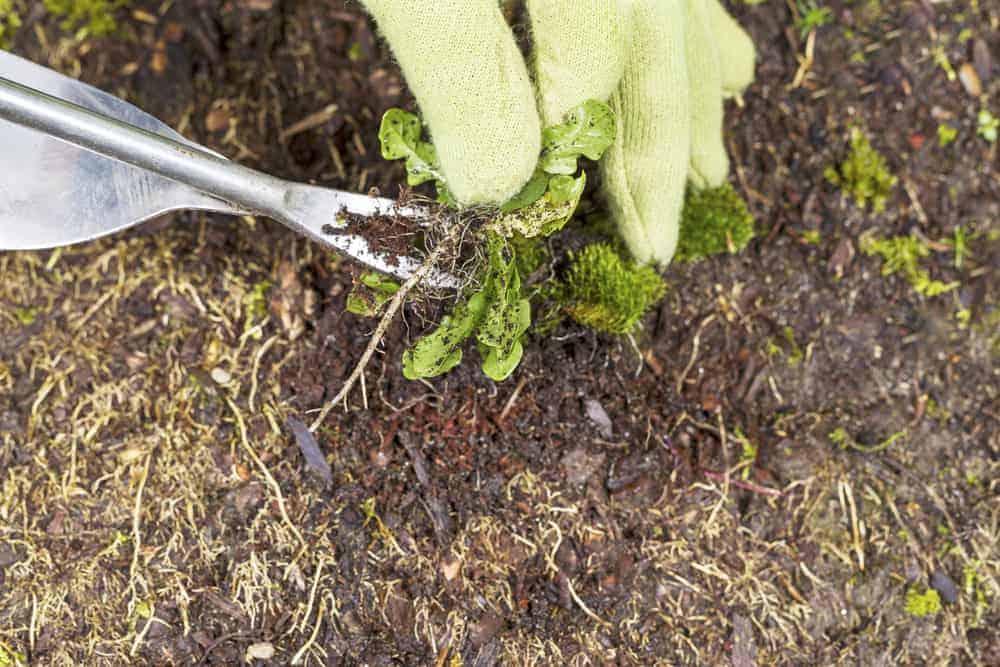
From the very beginning, while your seedlings are still small, you should keep them free from weeds. Undesirable grass will shade and stunt the growth of your luffas.
Therefore, you may use mulch or black plastic to keep tender, young plants weed-free. This way, you will also help the ground to become adequately warm, which will increase yields.
Supporting
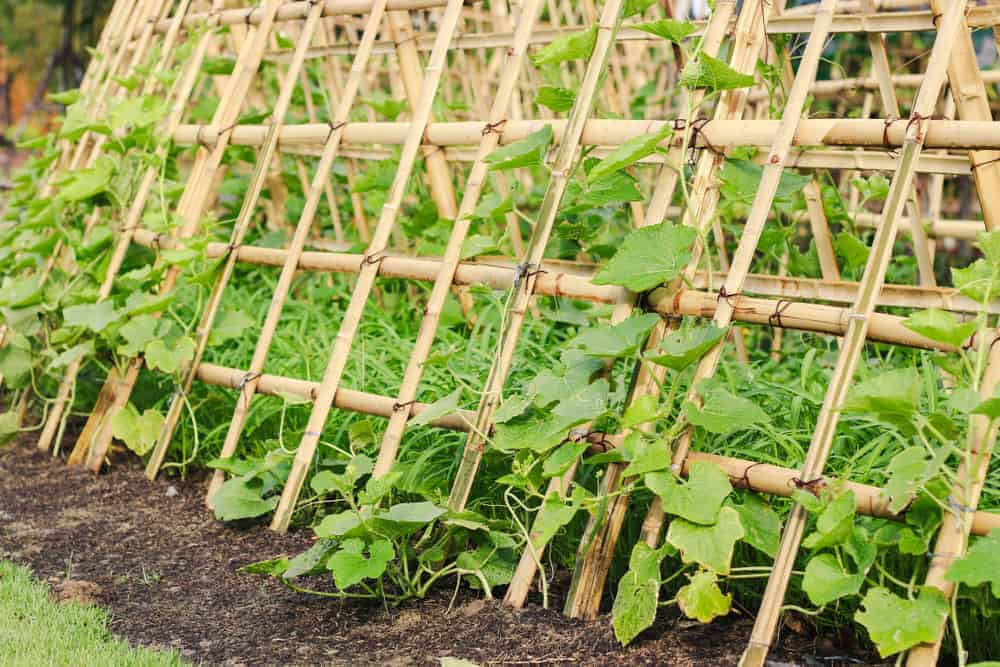
Be prepared that the vines of your luffas require a reliable trellis system. They grow high and need to climb. Since the length of the vine may exceed 30 feet (9 m), you should provide trellises which are at least 6 to 10 feet (1.8 – 3 m) high. You can expect that your plants will climb the trellis or start circling wooden poles.
How to Harvest Loofah Sponge
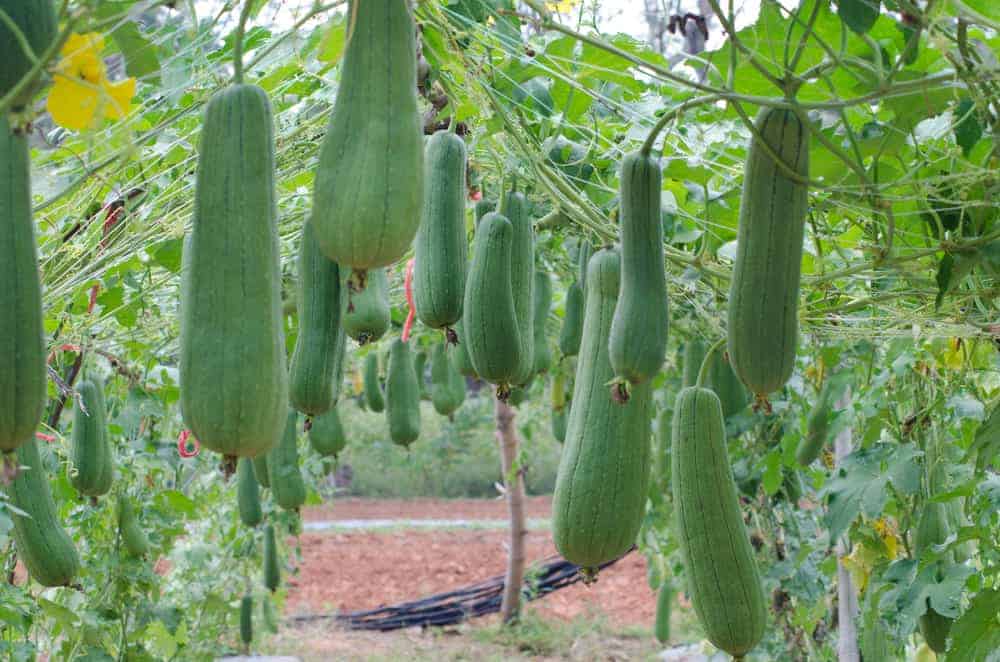
Since luffa is an edible veggie, you can harvest young fruits and use them for preparing delicious meals. The whole procedure is to cut the fruits off the vine when the time comes.
The problem is that this vegetable has a tender taste just for a while. If you harvest fruits a week or two late, it will become the worst food you have ever eaten.
Anyway, most gardeners grow this plant just because of the sponge. The right time for harvesting is about 150 to 200 days after planting when the fruits are entirely mature. The right moment is the one when fruits become light with dry and dark skin.
However, you should collect your loofah sponges before the first frost, regardless of whether they are mature enough or not. Use mature fruits to make sponges. Don’t throw away insufficiently ripe fruits, but add them to the compost pile.
How to Store Loofah Sponge
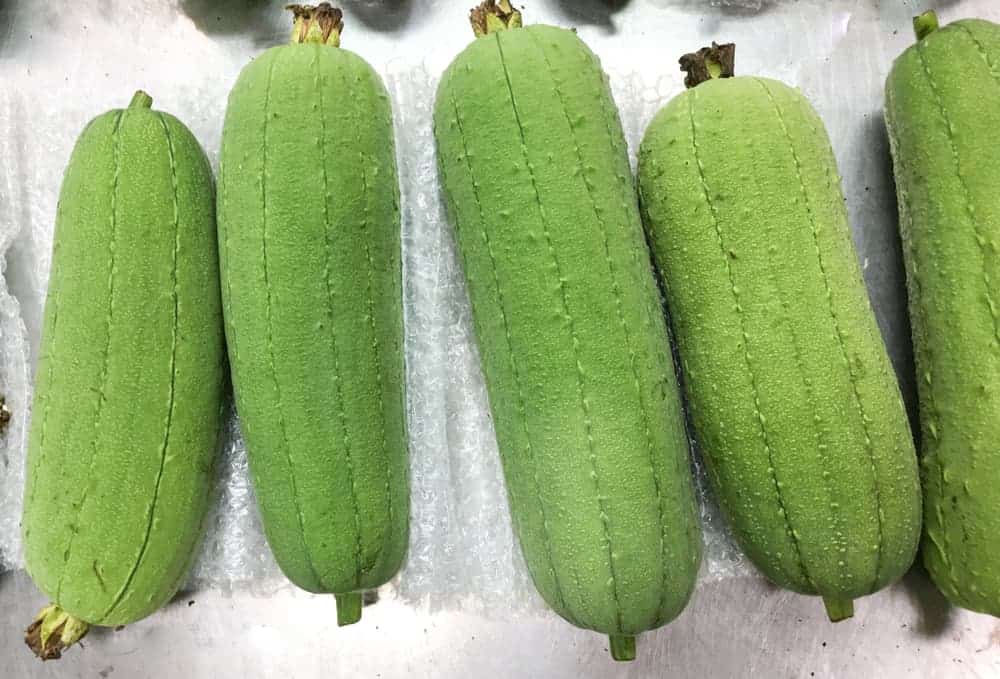
To store your loofah sponges adequately, you need to provide a relative humidity of 85 to 90% and the temperatures of 50 to 55 F (10 – 12 C) for them in the place where you plan to keep them safe.
If the temperatures in the storage area for eatable luffas are below 50 F (10 C), there is a risk of their freezing.
Loofah(Luffa) Sponge Pests and Diseases
Cucumber mosaic
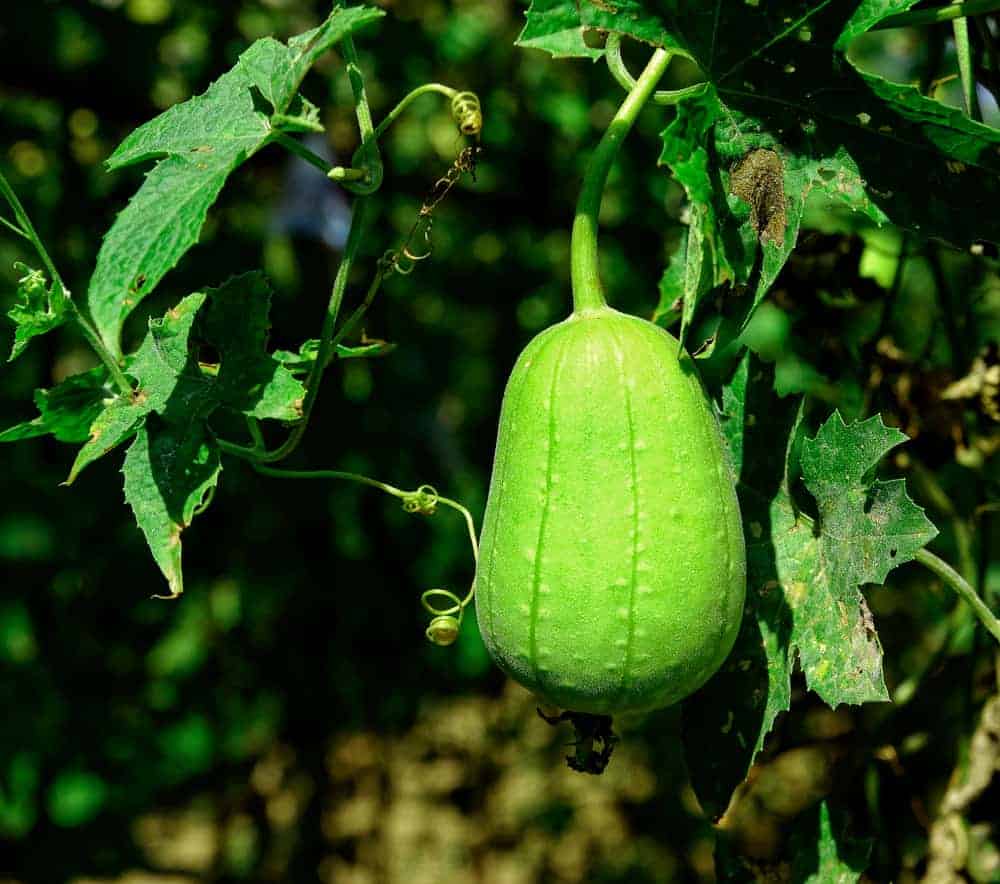
This virus causes the occurrence of stunted plants with leaves covered with recognizable yellow mosaic, while the fruits will grow small and distorted. Since aphids transmit this causative agent, the control of the aphid vectors is crucial for disease prevention.
Angular leaf spot
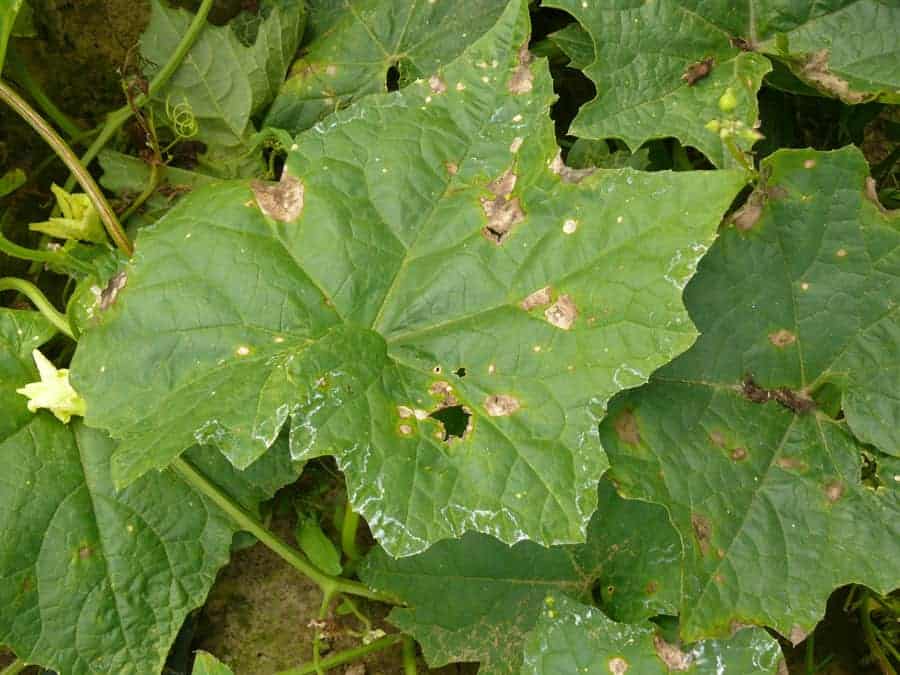
The first sign of this bacterial infection is the appearance of tiny, water-soaked lesions on the foliage. They develop between leaf veins and appear angular over time.
When the weather is wet, you may notice a milky substance which forms a crust over leaves after drying. The causative agent can survive in crop debris for more than two years, so you should buy new, disease-free seeds for the next season.
Downy mildew
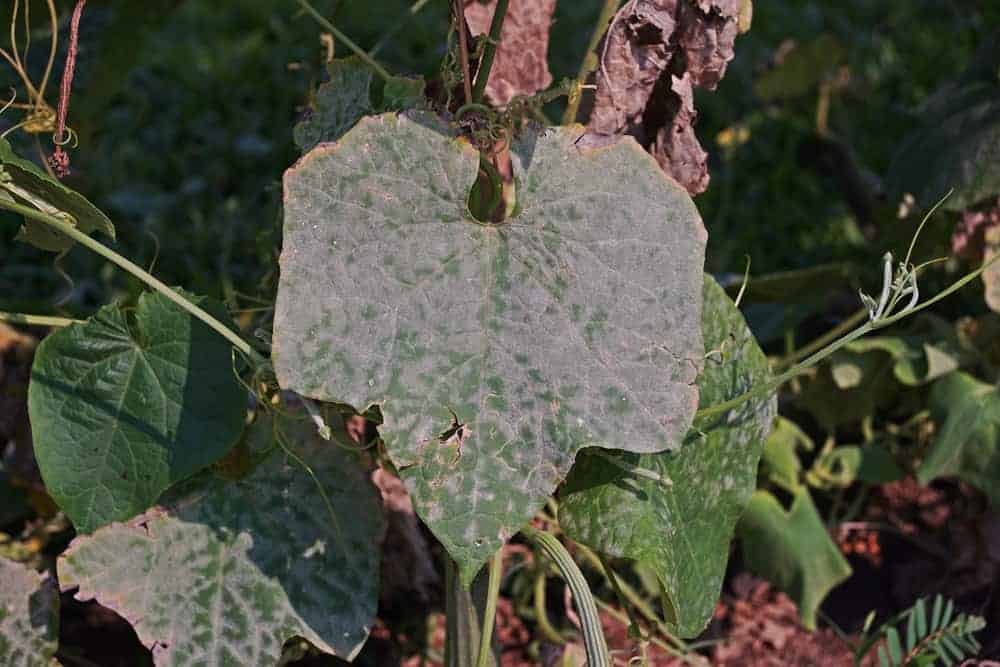
When you notice angular brownish lesions on the upper-side of the foliage and purple spores on their underside, it will be probably too late. Your luffa has already affected by this disease, and you may expect leaves of your plants turn brown and die.
It appears during cold and humid weather, and the only thing you can do is to prevent infection by avoiding overcrowding of your luffas and overhead irrigation. Apply an appropriate fungicide to keep the disease under control.
Verticillium wilt
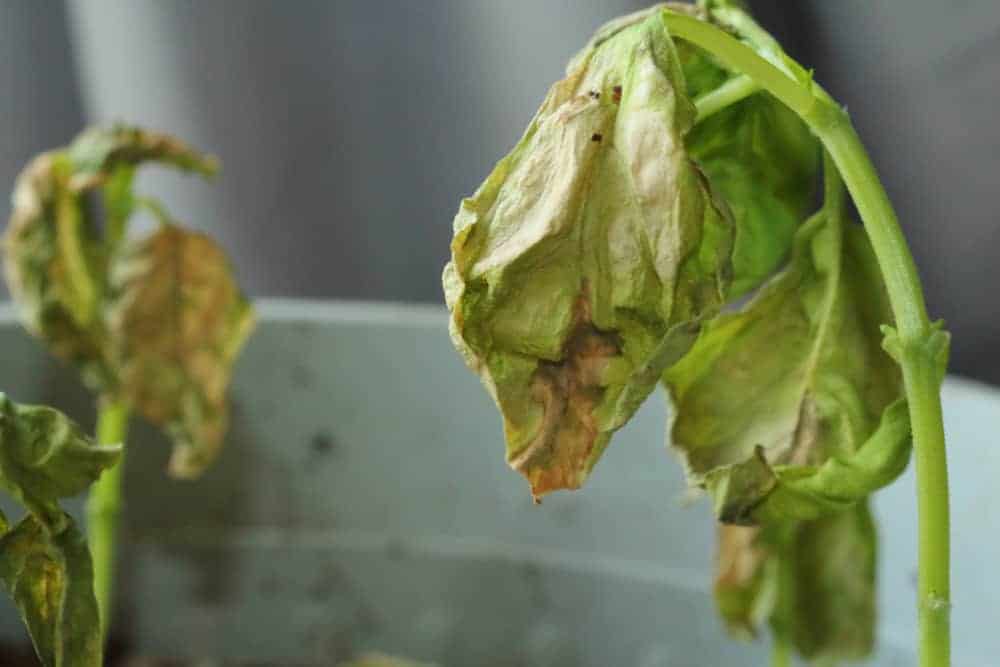
This fungi infestation affects plants after they set the fruits. You will spot chlorotic leaves with necrotic areas only on one side of the vine. This disease occurs in spring when the weather is still cold. Since this causative agent can survive in the ground for many years, the proper crop rotation is the best prevention.
Powdery mildew

The first symptoms are powdery, white patches underside of the foliage. Over time, leaves will turn yellow, especially during hot days with high humidity. Prevent this infection by providing excellent airflow among plants.
Septoria leaf spot
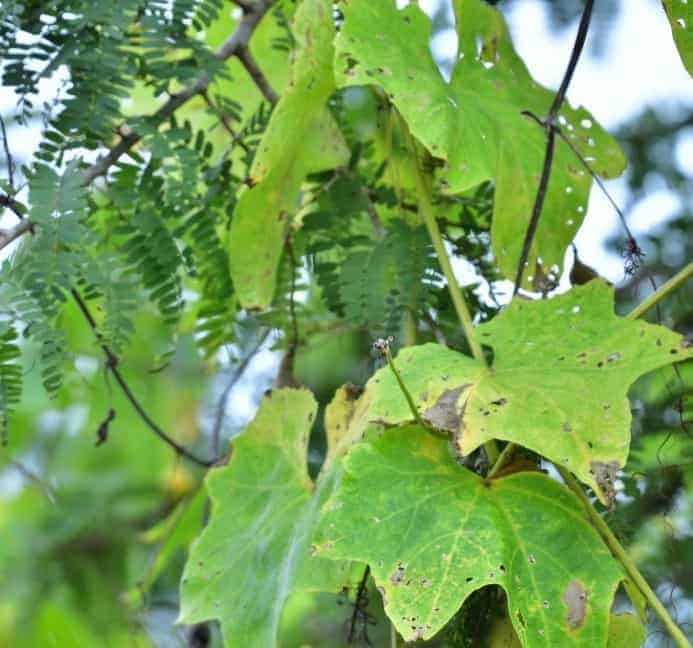
In the very beginning, you will notice tiny, dark spots on the foliage which turn white when the weather is hot. Since these fungi can survive for a year, you should rotate crops regularly and destroy any debris after harvest.
Alternaria blight
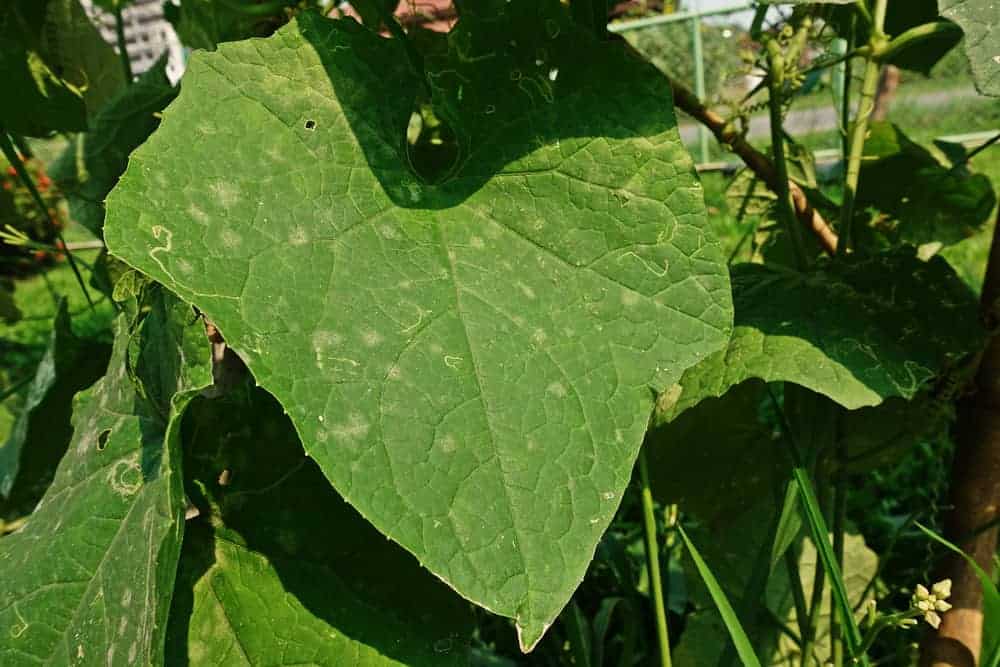
When the temperatures are too high during rainy days, these fungi cause the occurrence of tiny, yellow-brown spots on the oldest leaves. Over time, patches will affect all foliage, and it will begin to curl and die eventually. Rotate your crop every two years and destroy affected plants.
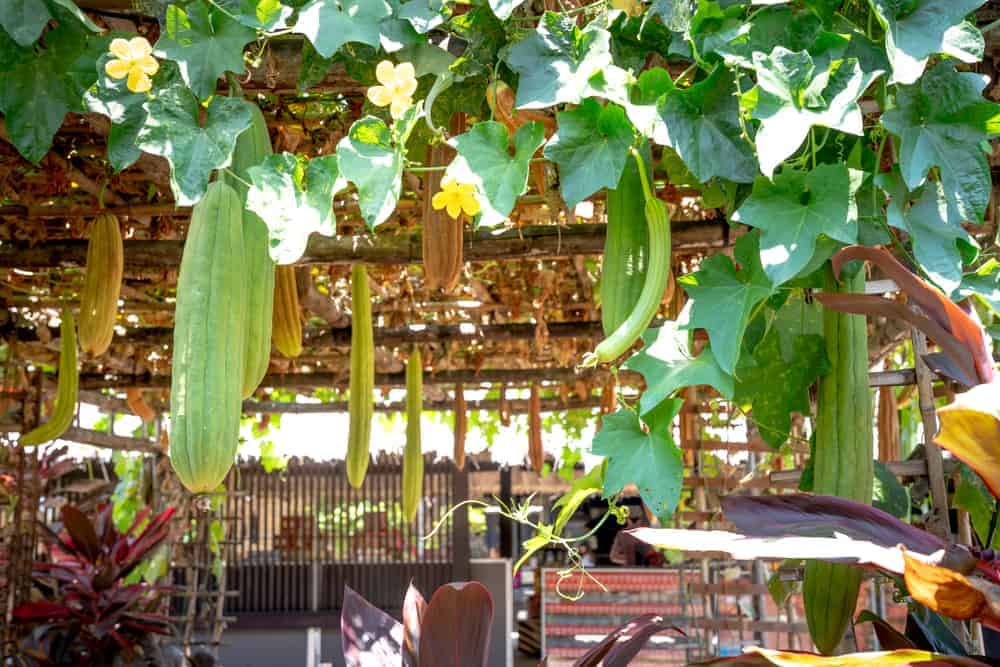
Leave a comment